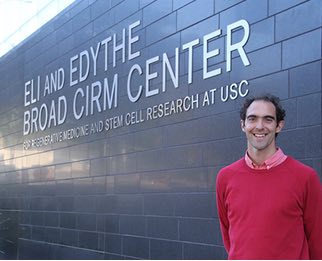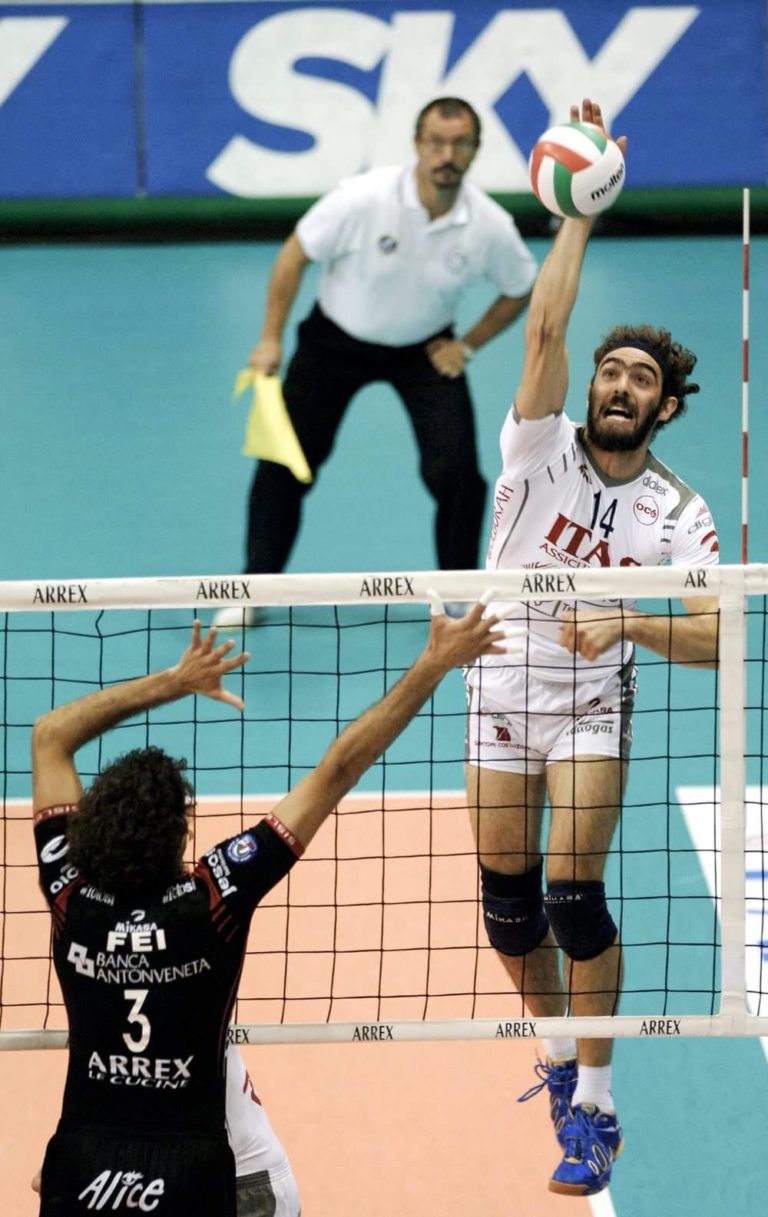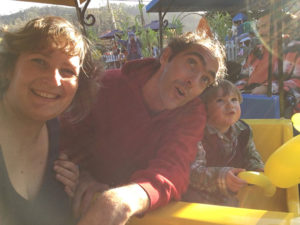
For USC Stem Cell researcher Leonardo Morsut, the word “set” refers to a collection of scientific data. “Set” is also the prelude to spiking a volleyball over the net—something he used to do for a living as a professional athlete in Italy.
“In my mind, professional volleyball was always a side project,” said Morsut, who played for seven years for the professional teams in his hometown of Padova and in Trentino. “It was science that was the main thing.”
True to his words, Morsut has always put research first. Even while playing professional volleyball for seven hours a day, he found the time and energy to attend the University of Padova, an institution where Galileo was once a lecturer. He earned bachelor’s and master’s degrees in medical biotechnologies, before pursuing a second bachelor’s degree in mathematics.

Then, at age 25, at the peak of his volleyball career, he quit. He walked away from fame and a generous salary to lead the humble life of a PhD student at the University of Padova. His decision made national headlines in Italy.
“People ask me if I regretted it,” he said. “I don’t even think about leaving that way. There wasn’t really a turning point. There was just one path.”
As a PhD student, he pursued research in bioscience, genetics and the molecular biology of development. He spent years focused on mouse gastrulation, the early embryonic phase during which a ball of cells organizes itself into distinct layers as a prelude to organ formation.
In the midst of this research, he picked up an unrelated side project: how stem cells behave differently depending upon whether they’re on a hard or a soft surface. Specifically, he and his colleagues found that when stem cells are on a hard surface, they react by producing two signals—called YAP and TAZ—that encourage them to become bone cells. The side project quickly became his main project, and Morsut and his team published their discovery in the journal “Nature.”
“It was really a rush and a blast,” said Morsut. “And it was what launched my career, because then it was easier to get a postdoc in a bigger lab.”
After receiving his PhD and spending an additional postdoctoral year at the University of Padova, he became increasingly fascinated by the emerging field known as “synthetic biology.”
“Synthetic biology is pretty much trying to bring the engineering approach of building things into biology,” said Morsut. “You think about the biological system not as something that you want to learn about, but as something that you want to use to achieve a goal.”
Inspired by this approach, he accepted a postdoctoral fellowship in the laboratory of one of the founders of synthetic biology: Wendell Lim at the University of California, San Francisco.
“Wendell and I didn’t even know what I was going to work on, but we liked each other,” said Morsut.
After some initial experimentation, Morsut settled on his main project: building a synthetic cellular communication system known as “synNotch.” This system enables scientists to direct the behavior of cells in useful ways.
Morsut created synNotch by co-opting a relatively simple natural communication system, called Notch, in which a cell uses a sensor on its surface to recognize and trigger a particular response to a specific signal. In Morsut’s synthetic version of Notch, he swapped in a new sensor—allowing him to control which signal the sensor recognizes, as well as what the cell does in response.
SynNotch or a similar system could have many potential medical applications. For example, scientists could swap in a sensor that enables an immune cell to recognize a signal from a tumor, and respond with an attack. Alternatively, researchers could use this technology to prompt cells to differentiate and organize into tissues with special properties, such as enhanced injury resistance or regenerative capacity.
This breakthrough earned Morsut a position as the newest assistant professor of stem cell biology and regenerative medicine at USC. At the same time, his wife Sabina accepted a postdoctoral fellowship in art history at USC. Other big changes are on the horizon: the couple, who originally met when they were 12 years old in their hometown of Padova, will expand their family with the arrival of their second child this June.
When he’s not enjoying his family or building tissues in the lab, Morsut can be found on the yoga mat, developing his meditation and hatha yoga practice under Yogarupa Rod Stryker.

As he starts his own lab at USC, Morsut plans to use synNotch to direct the differentiation of stem cells into blood vessels, which can supply oxygen and nutrients to engineered tissues and organs in the future. He is also working to develop additional synthetic biology tools, and looks forward to collaborating with researchers from across the university, especially at the USC Viterbi School of Engineering and the USC Michelson Center for Convergent Bioscience, slated to open in fall 2017.
“The stem cell department is very exciting, and it has a lot of potential and a lot of forward thinking,” said Morsut. “Engineering is also a strength of USC, and there is interest on both sides to grow more at that interface. That is definitely something that will benefit my research program and vice versa. I have high expectations.”
